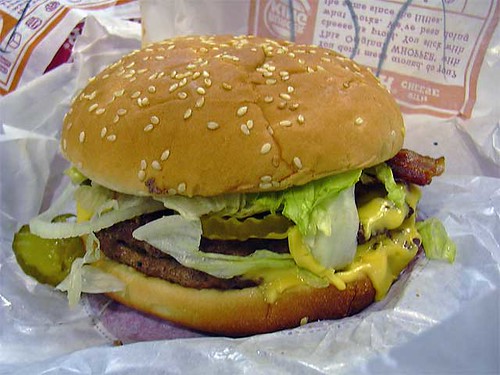 They will no longer be serving Whoppers at Sick Kids Hospital in Toronto, after the fast-food restaurant closed down in the food court there last Saturday.
They will no longer be serving Whoppers at Sick Kids Hospital in Toronto, after the fast-food restaurant closed down in the food court there last Saturday.
Canada’s largest hospital for children made the choice to close down the Burger King because of its unhealthy options such cheeseburgers and French fries, which are high in fat and salt.
The hospital is meant to offer healthy food choices for the visitors and staff. A doctor at Sick Kids named Vishal Avinashi started a Facebook group called, “Burger King should NOT be allowed to operate at Sick Kids Hospital.” There are 265 members in the group, and more are joining each day.
Avinashi tried to raise awareness of the messages that the hospital is sending by offering unhealthy options. He says the hospital is, “setting the wrong example” by allowing fast-food restaurants to sell unhealthy food there.
Since child obesity rates are at an all-time high in Canada, having an unhealthy, fast-food restaurant didn’t match the hospital’s goals of fostering healthy eating.
Even though Burger King was closed down, the food court at Sick Kids still offers options such as Pizza Pizza. On the Facebook group, members are now pushing for these unhealthy options to also be closed down as well.
However, Avinashi doesn’t want to become an “attack mob” closing all other fast-food restaurants. He simply wants to see healthier options available for kids.
The restaurant replacing Burger King is called Pastalicious, which offers whole-wheat pasta and other low-fat meals.
Related Link
The Burger King should NOT be allowed to operate at Sick Kids Hospital Facebook page.
CURRICULUM CONNECTIONS
Writing/Discussion Prompt
Today’s article explains that Sick Kids Hospital will no longer have a Burger King restaurant because it serves unhealthy food. Since child obesity is a very serious problem, do you think schools should follow Sick Kids example and stop selling unhealthy food too? Should schools cancel pizza lunches and bake sales? Why or why not?
Reading Prompt
Good readers are able to solve words they don’t know by thinking about what makes sense. Solving words this way is called using a semantic clue. If you were able to understand that the word “obesity” means overweight and that the word “unhealthy” means not healthy in the sentence below, you may not have known it, but you successfully used semantic clues!
“Since child obesity rates are at an all-time high in Canada, having an unhealthy, fast-food restaurant didn’t match the hospital’s goals of fostering healthy eating.”
Primary & Junior
Predict the meaning of and rapidly solve unfamiliar words using different
types of cues, including: semantic (meaning) cues (e.g., prefixes, suffixes, base words, phrases, sentences, and visuals that activate existing knowledge
of oral and written language) (OME, Reading: 3.2).
Grammar Feature: Conjunction
A conjunction is a word that joins words or groups of words. For example, in the following sentence the word “because” is a conjunction because it joins a group of words announcing the choice to close the restaurant with another group of words describing the reason it is closing.
“Canada’s largest hospital for children made the choice to close down the Burger King because of its unhealthy options such cheeseburgers and French fries, which are high in fat and salt.”
The most common conjunctions are: and, because, however, or, that, when, since, if, but, as, for, and than. Write one sentence that includes as many conjunctions as you can think of. And yes, it has to make it sense!







